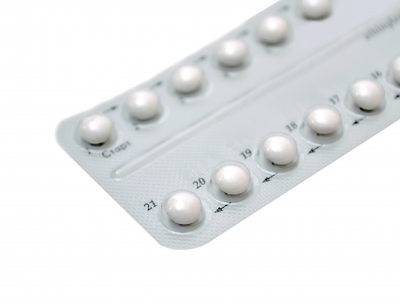How Do They Work? (Birth Control Series)
Photo courtesy of Brandon Sigma/Free Digital Photos
There are many birth control options on the market today. The most common methods are the pill, the patch, the implant, injectable, the vaginal ring, and the IUD. The pill and the IUD are the two most common, so we will focus on those for now.
The pill is a hormonal contraceptive that contains both estrogen and progesterone. It works by three different mechanism to inhibit pregnancy. There is also a pill on the market with only progesterone and it is typically given to nursing mothers, because estrogen can affect milk supply.
The first mechanism of action is to suppress ovulation. (release of egg from ovaries) Secondly, it thickens the cervical mucous which basically slows down sperm. Thirdly, secretions are altered in the uterus (womb) to produce areas of swelling and dense regularity to keep implantation from happening.
The most common side effects are headaches, dizziness, breast tenderness, nausea, breakthrough bleeding, decreased libido, and mood swings. Who wants that??
There are two types intrauterine devices on the market. The first is copper containing,(ParaGard) and is approved for use up to 10 years. The other one is hormonal (Mirena). It releases progesterone and is approved up to five years.
It is stated that 24 hours after insertion it starts to create a local inflammatory response inside the uterus. This attracts white blood cells that are toxic to sperm. Like the pill, these also work to thicken cervical mucosa. The IUD also works by changing the endometrial lining thus impairing implantation.
Side effects for the IUD include cramps, spotting, heavy menstrual flow, infection, pelvic inflammatory disease, and infertility. It is stated that 1/1000 insertions have to be surgically removed because the IUD perforated the uterus and went into the abdominal cavity.
There is much debate on these hormonal birth control methods on how they contribute to cancers, infertility, blood clots, heart attacks, and strokes. According to the National Cancer Institute the studies and research to prove the links have been inconsistent. From what they have been able to gather, the risk for ovarian and endometrial cancers have gone down. However, breast, cervical, and liver cancer have all increased. Whatever data you choose to believe, it is a fact that these cancers feed off of excess estrogen and progesterone. To add more of that in your body seems only logical that it would add to your health risk.
Onto birth control being abortifacients.
As you can see for yourself in package inserts one of the mechanisms of action in the two most popular forms of birth control on the market are to effect the endometrium, thus affecting implantation. Basically, just in case the woman ovulates and the sperm makes its way through the thick cervical mucosa and fertilizes the egg, it will die off because it will have no luck trying to implant into your womb. If you are like me and remember back at any certain time when you were on a hormonal birth control and had an extremely heavy period than normal, could have been a miscarriage…
At the moment that sperm reaches the egg new life has burst into being. At that moment its complete DNA makeup, even the sex has been determined. To know that my ignorance of not being informed about this has crushed me. This is why I am so passionate about telling others what I never knew. Imagine all of the babies that have been lost from not knowing this information.
There is not much of a line between abortion and hormonal contraceptives when we look at the facts. We must inform ourselves and seek after what God would have us do.
Please subscribe and share your experiences. Have you had any side effects? Did you know they were abortifacients?
Click here to read other post in this series.















I was on the pill for about the first year of marriage because I sadly didn’t know any better-never again! I did feel pretty yucky all the time but worst of all for side affects, I started getting migraine headaches and I’ve had them ever since. I think it must be something with hormones because I never got them before being on the pill and now I get them around my period or lots when I’m pregnant-really awful!
Thank you, Brittany, for this info and series. I was on the pill for 10 years and when I got off of them, it took 3 years for me to get pregnant. I thought I was been socially responsible and mature in my decision to take the pill. My husband and I had given up trying to conceive because it wasn’t happening. Then, lo and behold, The Lord answered my prayer. Ever since the birth of my sweet little girl, I have not and will not take any artificial hormone form. We try to use natural family planning only, but condoms do come into the picture every now and then. I did have some heavy periods while on the pill and I did think,”There goes a potential baby.” Even now, whenever my period comes, I wish and pray that it hadn’t, but I know that God has a plan and will work everything out for the good of my family and our souls.
I was on the pill briefly, though I was not sexually active at the time, because I’d read that it could help prevent ovarian cancer (it works by decreasing the number of times you ovulate – the reason moms of larger families also have protection – but since I’m unmarried, having a big family is not currently an option). I couldn’t stand the mood swings, so I stopped taking it and decided to use FAM for when I do, hopefully, one day get married – since FAM can help prevent pregnancies and also make achieving pregnancy easier when the time is right. It’s also just great to be aware of your body in that way – you can more quickly notice changes that may merit a trip to the doctor.